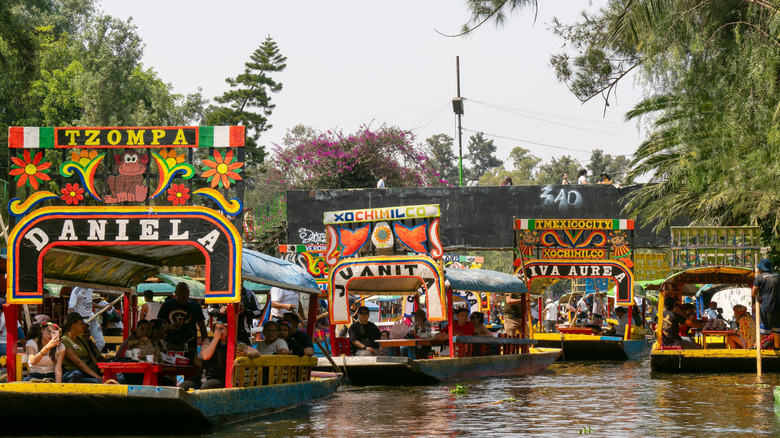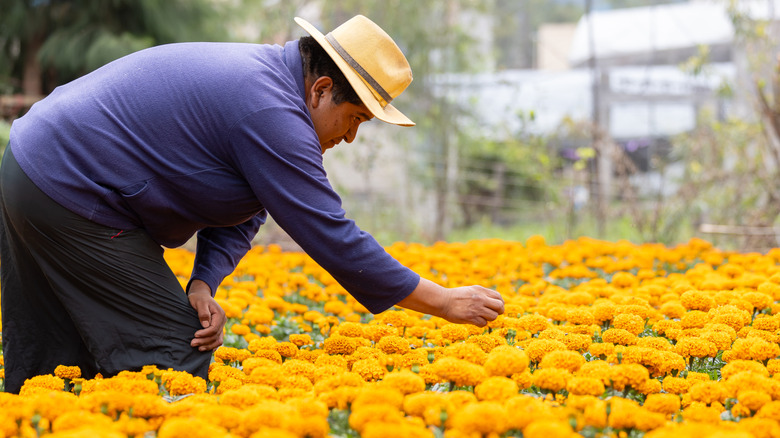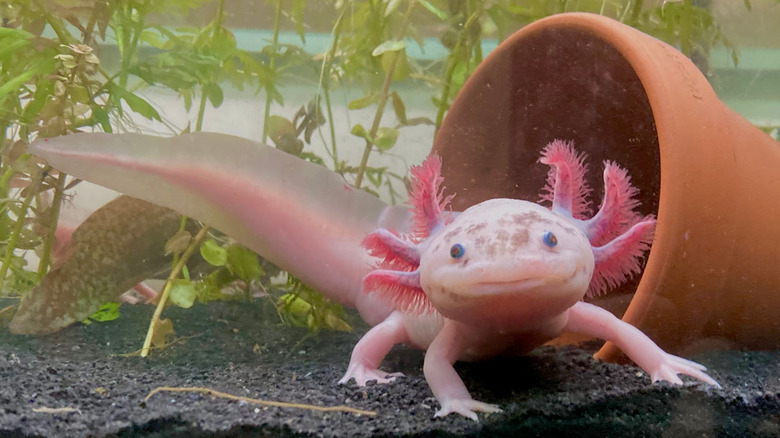The 'Venice Of Mexico' Is A Colorful Aztec Borough Of Floating Gardens, Island Markets, And Boat Rides
Some of the world's most beautiful and most visited destinations feature canals where people built homes and livelihoods around water networks. Beyond the world-renowned Venice canals in Italy, other notable canals around the world include Chioggia, Italy's "other Venice" with its underrated, uncrowded town, the Venice of Los Angeles with its own charming waterways full of bridges, and even the scenic canals of Cape Coral, Florida. But there's also a little-known network of canals in Mexico that are praised for their beauty, lauded for their engineering and agricultural genius, and prized for their cultural significance. Xochimilco — pronounced So-chi-MEEL-ko, meaning "place where flowers grow" in the Nahuatl language — is a UNESCO World Heritage Site and a must-visit when traveling to Mexico City.
During the pre-Columbian Era, the Aztecs built a network of gardens, called "chinampas," on Lake Xochimilco, with the intent to turn the lake into functional cropland. The chinampas were crafted from reeds and juniper branches, webbing together islands of mats and plastering them together with mud, webbed layer upon webbed layer until they protruded out of the water and eventually made their own roots far beneath the surface. This island-building resulted in fertile soil from which the Aztecs grew not only flowers but also food crops like corn, potatoes, beans, and squash. The "artificial" islands comprised more than 5,000 acres and created canals used as transport lanes for shipping produce to Mexico City. The Aztecs navigated these island waterways using boats called "trajineras," which were painted colorfully and decked out in floral accoutrement, each with its own personality and name. Today, trajineras take visitors up and down the canals, exploring the ancient engineering feats of the Aztecs that are still operational.
How to experience Xochimilco
The best way to experience Xochimilco is to allow at least a half-day to explore. It's about 45 minutes or more from central Mexico City to Xochimilco, and you can easily take a car service from where you are in the city. Alternatively, it's easy to navigate the metro system. You can purchase a metrocard in most stations, but make sure you exercise awareness: Rick Steves has some wise travel tips for staying safe in Mexico City. From Tasqueña station, you can use your metrocard to take the Tren Ligero directly to Xochimilco. Walk to the embarcaderos (docks) and hire a trajinera for a few hours or a full day or book a tour in advance, which often includes transportation and tequila. Negotiating your rate here is a pro move. When hiring your own boat, savvy travelers recommend going to Nuevo Nativitas, where guides are more negotiable, rather than Belem Dock. Also, consider going at sunrise for fewer crowds and a tranquil experience.
The remeros — the trajinera boat captains, similar to gondoliers — use long poles to propel the boats through the Xochimilco canals. Canal energy is very social — particularly on weekends — with boats pulling up alongside each other for laughter and chats. Mariachis hop from boat to boat, creating an ubiquitously festive atmosphere. You'll see the floating gardens and greenhouses, which are still being cultivated today with gorgeous flowers, an abundance of vegetables, and other botanicals using the traditional Aztec techniques. You can purchase souvenirs from the floating market, and snacks like elote and micheladas from the boating vendors, but make sure you bring cash. You'll also pass Isla de las Muñecas, an island that's no longer accessible to the public but is famously adorned with old dolls in homage to a girl who reportedly drowned there.
Xochimilco is a gorgeous ecological paradise, but its future is at stake
Xochimilco's wetlands are a habitat for numerous birds and wildlife, including herons, migratory birds, egrets, and fish, and the ecological park at Xochimilco is an incredible place to go birdwatching, as approximately 300 species of birds have been identified there. The chinampas are considered "one of the most productive agricultural systems in the world," and UNESCO proclaimed Xochimilco a World Heritage Site in 1987, but the area faces problems as urbanization and industrialization pollute the waters and shrink the natural habitats that have so long been a part of Mexican biodiversity. Funneling fresh water into Mexico City caused water levels to fall in the early 1900s, and in modern times, major flooding and stormwater runoff — effects of urbanization — have seeped into the canals, polluting the foliage and fish. One of the most beloved and recognizable mascots of the area is the endemic axolotl, an endangered salamander that faces extinction, long revered for its association with the Aztec god of fire and lightning.
Xochimilco hosts high volumes of tourists each year, but as this is still a rather unrepresented gem in global travel, the number will likely increase. Luckily, many conservationists, farmers, scientists, and even tourists are helping to support and restore sustainable agricultural methods and depollute the water. In addition to taking the iconic tijanera boat tour and visiting the floating markets and gardens, consider taking an eco-focused tour to learn more about the diversity of the area and how conservation efforts are vital in the area. There are several options, but Arca Tierra offers thoughtful, sustainable tours and sustainably sourced products from the area, and Pachoa has similar, authentic tours and experiences if you're looking for something a little deeper than a booze cruise.


